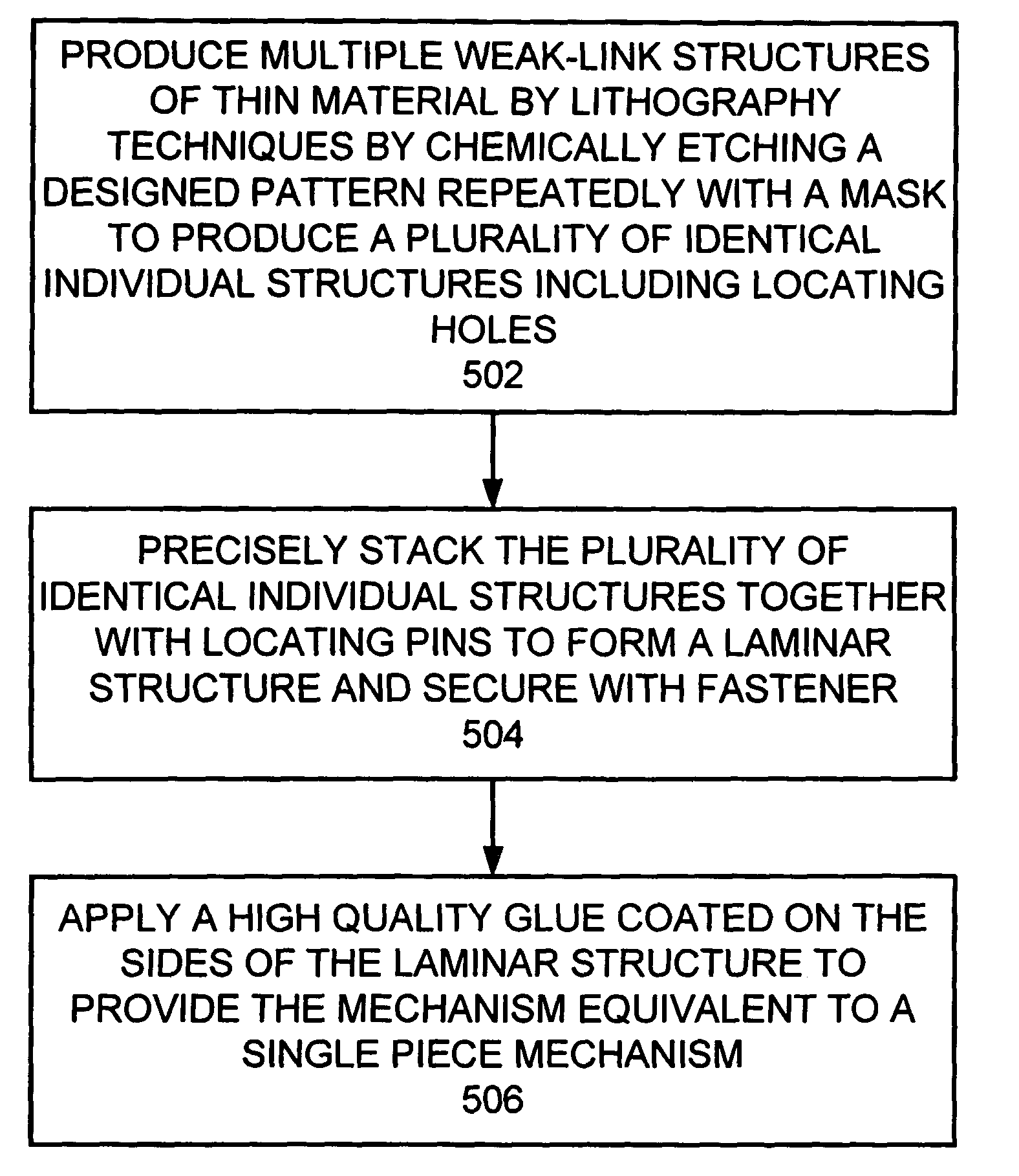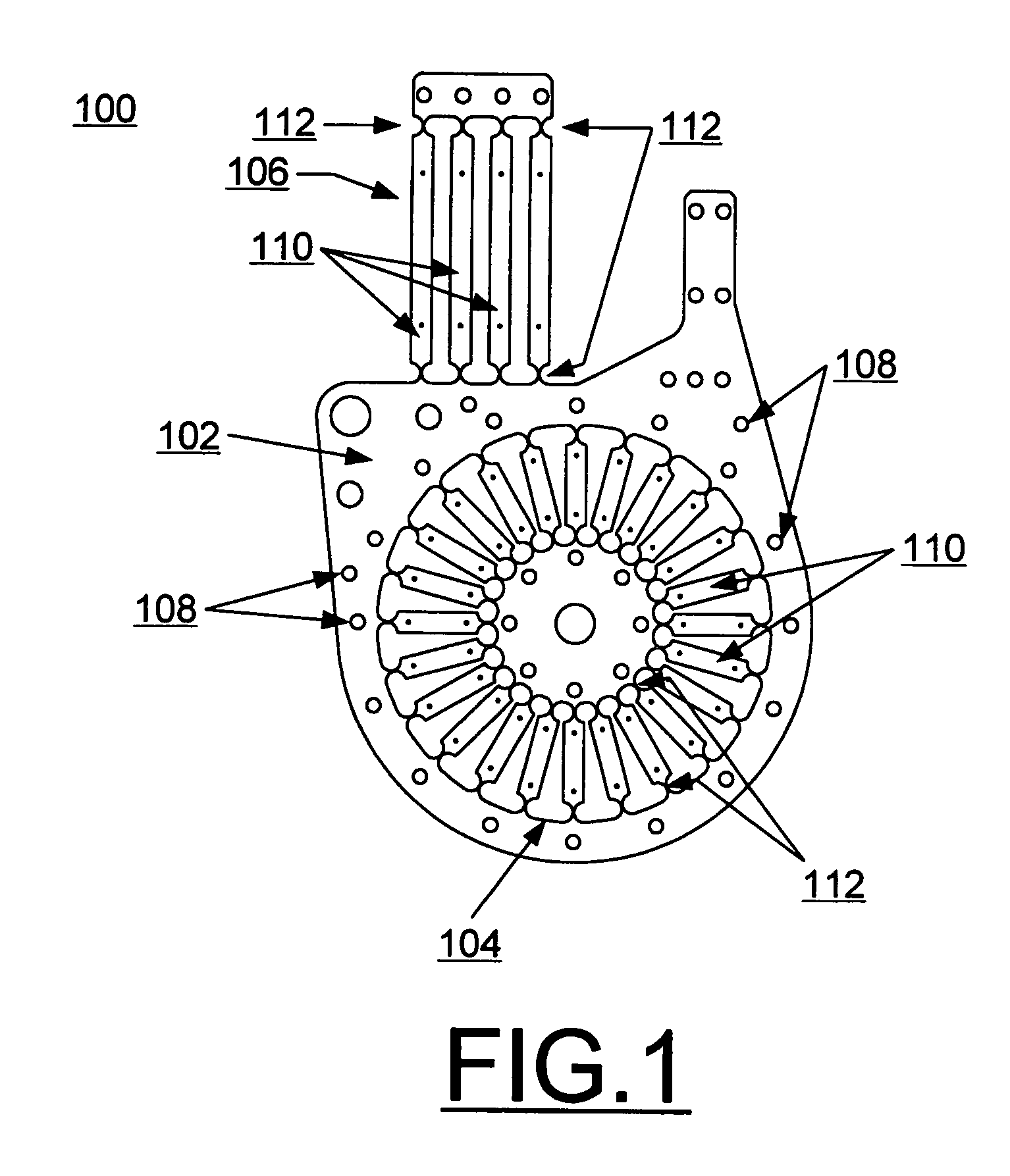Redundantly constrained laminar structure as weak-link mechanisms
a weak link mechanism and redundant constraint technology, applied in mechanical equipment, transportation and packaging, chemical equipment and processes, etc., can solve the problems of unstable structure, difficult to achieve the desired precision, and single layer structures that normally do not have the desired stiffness against flexing, etc., to achieve the desired stiffness and stability
- Summary
- Abstract
- Description
- Claims
- Application Information
AI Technical Summary
Benefits of technology
Problems solved by technology
Method used
Image
Examples
Embodiment Construction
[0021]Having reference now to the drawings, in FIG. 1 there is shown an exemplary redundantly constrained weak-link structure in accordance with the preferred embodiment generally designated by the reference character 100. FIG. 1 shows the shape of the metal weak-link sheet 102, which is produced by a photochemical machining process. Two motion structures 104, 106 are designed on the same metal sheet 102. A wheel-shaped weak-link group 104 acts as a planar rotary shaft, and a parallelogram-shaped weak-link group 106 acts as a linear slide. To optimize the system stiffness, over-constrained mechanisms were chosen in this design of weak-link structure 100. The precision of the modern photochemical machining process using lithography techniques makes it possible to construct a strain-free, or strain-limited, over-constrained mechanism on the thin metal sheet 102. By stacking these thin metal weak-link sheets 102 with align-pins, a solid complex weak-link structure is constructed for a ...
PUM
| Property | Measurement | Unit |
|---|---|---|
| yield stress | aaaaa | aaaaa |
| structures | aaaaa | aaaaa |
| stiffness | aaaaa | aaaaa |
Abstract
Description
Claims
Application Information
 Login to View More
Login to View More - R&D
- Intellectual Property
- Life Sciences
- Materials
- Tech Scout
- Unparalleled Data Quality
- Higher Quality Content
- 60% Fewer Hallucinations
Browse by: Latest US Patents, China's latest patents, Technical Efficacy Thesaurus, Application Domain, Technology Topic, Popular Technical Reports.
© 2025 PatSnap. All rights reserved.Legal|Privacy policy|Modern Slavery Act Transparency Statement|Sitemap|About US| Contact US: help@patsnap.com



